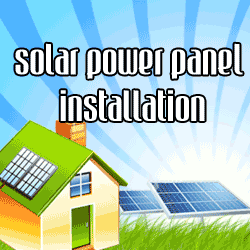

"Green Building" is a broad term used to describe the design and construction of sustainable and environmentally conscious buildings.
The driving force behind this is to lower our negative impact on the environment and, at the same time, make the buildings we live and work in safer and healthier for us.
According to the United States Green Building Council (USGBC) statistics,`buildings are responsible for all of the following:
- 39% of US carbon dioxide (CO2) emissions
- 70% of US electricity consumption
- 15 trillion gallons of water consumption
Even though there is still some controversy over the effect of greenhouse gases on the environment, the last two statistics are very important for those of us living in urban areas experiencing continuous growth, especially the American Southwest. With our population expansion, aging water and electrical infrastructure, and shrinking landfills, designing and constructing green and sustainable buildings makes practical sense from a utilitarian perspective.
In fact, USGBC data shows that green buildings use 36% less energy, require fewer raw materials, and divert less waste to our landfills. Furthermore, the "increased" cost of green building is only one or two percent more expensive than a conventional building. This minute difference exemplifies the tangible and long-term benefits of sustainable design, primarily due to the fact that green buildings conserve water and electricity. Thus, while they are more expensive to build, green structures will save money by conserving more energy over time.
Another push towards the green build movement is by local governments. More and more municipalities are adopting the USGBC LEED® (Leadership in Energy and Environmental Design) guidelines for new and renovated buildings. In 2006, at the USGBC Greenbuild expo, the Mayor of Denver challenged other major cities to see who can have the most LEED® certified green buildings. They are accomplishing this by offering tax breaks to private corporations and mandating sustainable construction for city-financed projects.
This has led to a dramatic increase in the number of sustainable projects built by LEED® Certified general contractors. However, this growth has not come without challenges. Currently, the following issues are restricting the number of green projects being built:
- Increased demand for green products has lead to long lead times
- New and unspecified materials are labeled “green” products which are not necessarily certified
- Building officials are struggling with a steep learning curve on how to evaluate these new products and sustainable building techniques
Despite these difficulties, the USGBC, sustainability advocates, and green building construction management firms are meeting to overcome these challenges.
The LEED® process is constantly under review and continues to adopt the latest codes and products. This includes Standard 189, a new minimum standard for green building. The USGBC is currently developing LEED® 3.0 and working with national code writers to include new products and techniques.
The American Institute of Architects (AIA) has even rolled out a new initiative called "Sustainability 2030," which at its roots, is looking to design all buildings by the year 2030 as carbon neutral. The USGBC has even initiated the Green Advantage Builders Certification for contractors to certify their knowledge in green building techniques.
So what does green building mean at the end of the day? It's simple yet profound: Do the right thing for you, the environment, and the next generation. While most companies are concerned with their bottom line, they ought to embrace the idea that energy and water conservation, green building, and the use of "green materials" in construction stands to increase their savings over time while positioning them as a leader in environmental stewardship.
According to the USGBC, we spend 90% of our time indoors. Due to this fact, scientists have identified an increase in allergies, asthma, absenteeism from school, and even work. There have been numerous studies done on post occupancy productivity levels, which have increased within "green" built facilities. Not only does green adaptation result in less sick days taken, but also shows an increase in productivity, job satisfaction, and in the case of schools, better grades.
So, as we positively affect the environment around us with sustainable green construction, we eventually create better health for ourselves.
About the Author:
Matthew Hancock is a LEED® accredited professional, a Green Advantage Certified Builder and a member of the Dallas chapter of the USGBC. He is a project manager for the Dallas office of Adolfson and Peterson Construction and a proponent of the sustainable and green building movements.
Adolfson & Peterson Construction is a 61-year-old company with offices in Minneapolis, Minnesota; Denver, Colorado; Phoenix, Arizona; and Dallas, Texas (AIA Dallas Chapter 2007 Contractor of the Year). Adolfson & Peterson is currently ranked 72 on the Engineering News-Record Top 400 General Contractors list. Services provided are construction management, design/build, general contracting, LEED® construction capability, Green Advantage® certified personnel, facilities maintenance, Building Information Modeling, and long-term care to various public and private clients.
Interested in learning more about the green building trend? A couple of good resources are the USGBC and the Adolfson & Peterson library of resources on green construction management.
Article Source: ArticlesBase.com - Trends in Green Building and Sustainable Construction







